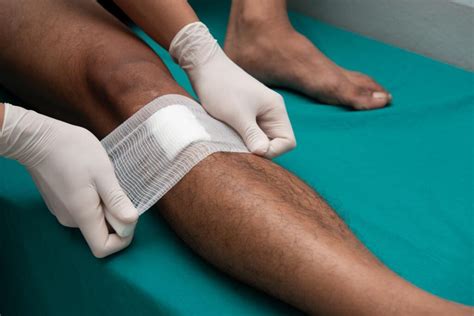Is Your Gauze Application Correct? A Comprehensive Guide
Gauze, a ubiquitous material in healthcare settings and first aid, is deceptively simple. Its proper application, however, is crucial for effective wound care and preventing complications. Incorrect gauze application can lead to infection, delayed healing, and increased discomfort. This comprehensive guide will delve into the nuances of gauze usage, addressing common questions and ensuring you’re confident in your technique.
What are the different types of gauze?
Gauze comes in various forms, each suited for specific applications. Understanding these differences is vital for choosing the right type for a particular wound. Common types include:
-
Plain Gauze: This is the most basic type, often used for covering wounds, absorbing drainage, and providing a barrier. It's typically made of 100% cotton.
-
Impregnated Gauze: This gauze is treated with substances like petrolatum, saline, or iodine to enhance its properties. Petrolatum gauze, for example, helps keep wounds moist and prevents sticking. Saline-impregnated gauze assists in wound cleansing. Iodine-impregnated gauze possesses antiseptic qualities.
-
Non-Adherent Gauze: Designed to minimize sticking to the wound bed, this type reduces pain and trauma during dressing changes. These often have a thin, non-stick coating.
How do I properly apply gauze to a wound?
Proper gauze application involves several key steps to ensure both effectiveness and patient comfort:
-
Clean Hands and Environment: Begin with thoroughly washing your hands and cleaning the surrounding area. This prevents the introduction of bacteria.
-
Wound Assessment: Carefully examine the wound to assess its size, depth, and presence of any debris or infection.
-
Wound Cleansing: Gently cleanse the wound with sterile saline solution, removing any visible dirt or debris. Avoid harsh scrubbing, which can damage delicate tissue.
-
Gauze Selection: Choose the appropriate type of gauze based on the wound's characteristics. For example, non-adherent gauze is preferable for wounds that are likely to bleed or have fragile tissue.
-
Gauze Application: Apply the gauze gently to the wound, ensuring complete coverage. Avoid excessive pressure. For larger wounds, multiple pieces of gauze may be necessary.
-
Securing the Gauze: Secure the gauze with medical tape or a bandage, ensuring it's snug but not constricting. This helps to keep the gauze in place and prevent contamination.
-
Frequency of Changes: The frequency of gauze changes depends on the type of wound and the amount of drainage. Always follow the advice of a medical professional regarding dressing changes.
When should I seek professional medical help for a wound?
It's crucial to seek professional medical attention if:
- The wound is deep, wide, or involves significant bleeding.
- There are signs of infection, such as increased pain, swelling, redness, pus, or fever.
- The wound doesn't heal properly within a reasonable timeframe.
- You're unsure about the proper wound care techniques.
What are the signs of a wound infection?
Recognizing the signs of a wound infection is essential for timely intervention. Look out for:
- Increased Pain: More intense pain than expected.
- Swelling and Redness: Significant swelling and redness around the wound.
- Pus: A yellowish or greenish discharge from the wound.
- Fever: A temperature above 100.4°F (38°C).
- Red Streaks: Red lines extending from the wound, indicating the spread of infection.
How often should I change a gauze dressing?
The frequency of dressing changes varies significantly depending on the type of wound and the amount of drainage. Minor wounds might only need dressing changes every few days, while more serious wounds may require daily or even more frequent changes. Always follow the instructions of your healthcare provider or the guidelines provided in your wound care instructions.
Can I use homemade saline solution for wound cleaning?
While homemade saline solutions are sometimes suggested, using sterile saline solution purchased from a pharmacy is strongly recommended for wound care. Homemade solutions may not be sterile and could introduce bacteria into the wound, increasing the risk of infection.
This guide provides general information and shouldn't replace professional medical advice. Always consult a healthcare provider for diagnosis and treatment of any wound. Proper gauze application is a critical element of effective wound care, contributing significantly to healing and minimizing complications. By understanding the nuances of gauze types and application techniques, you can ensure optimal wound management.

